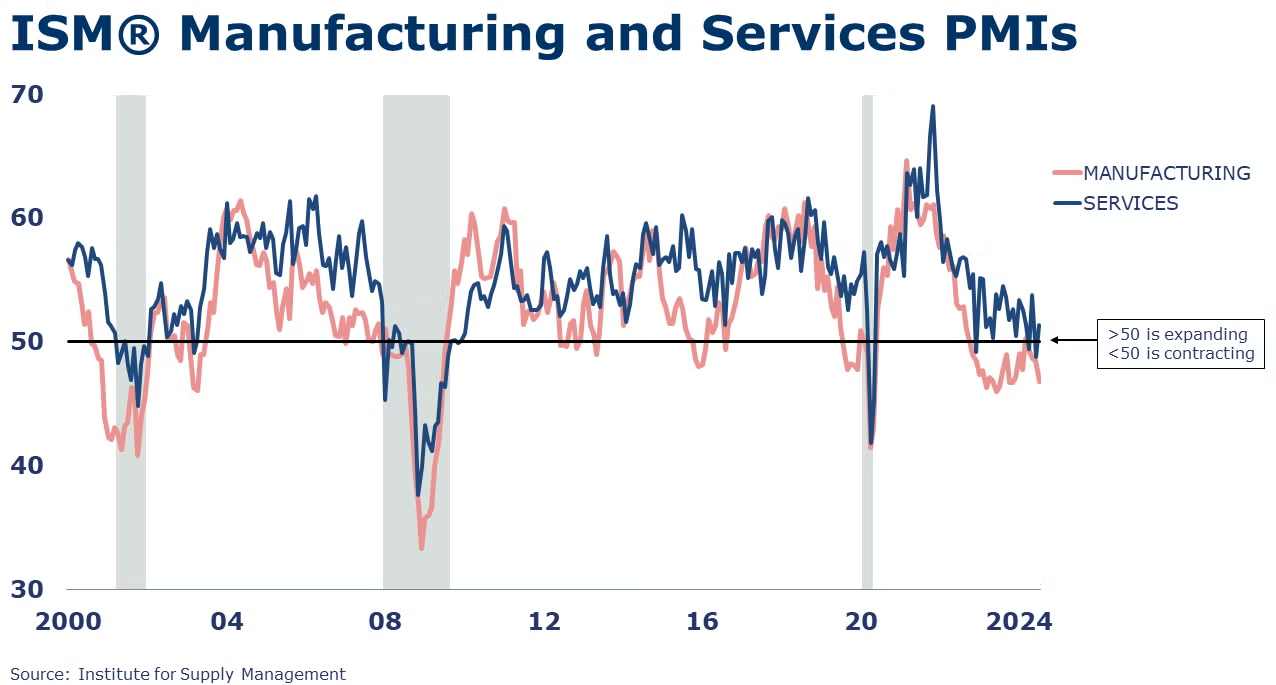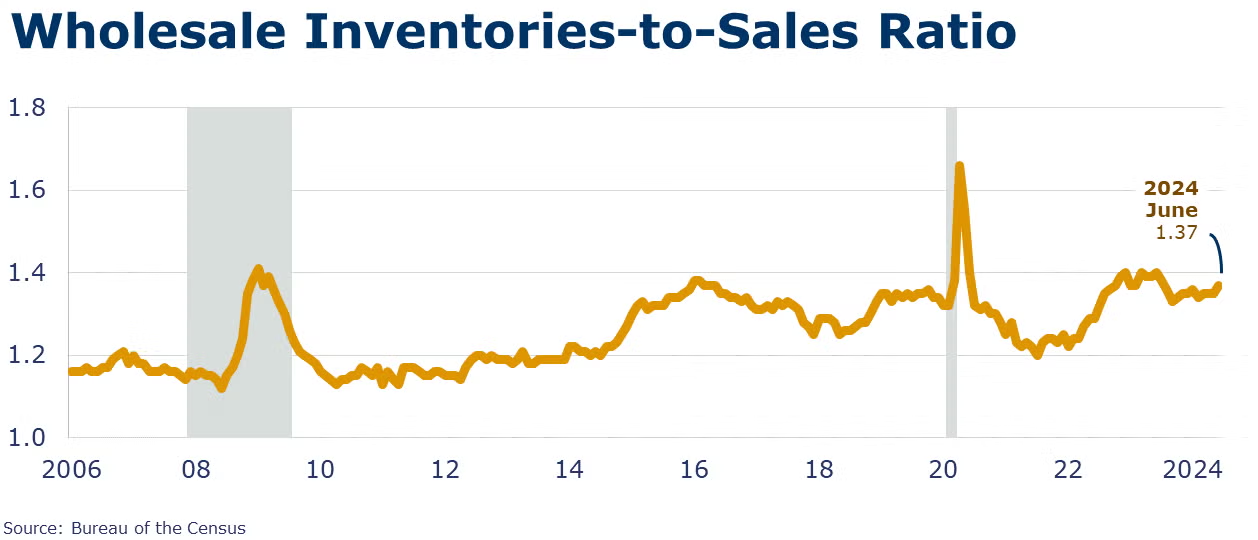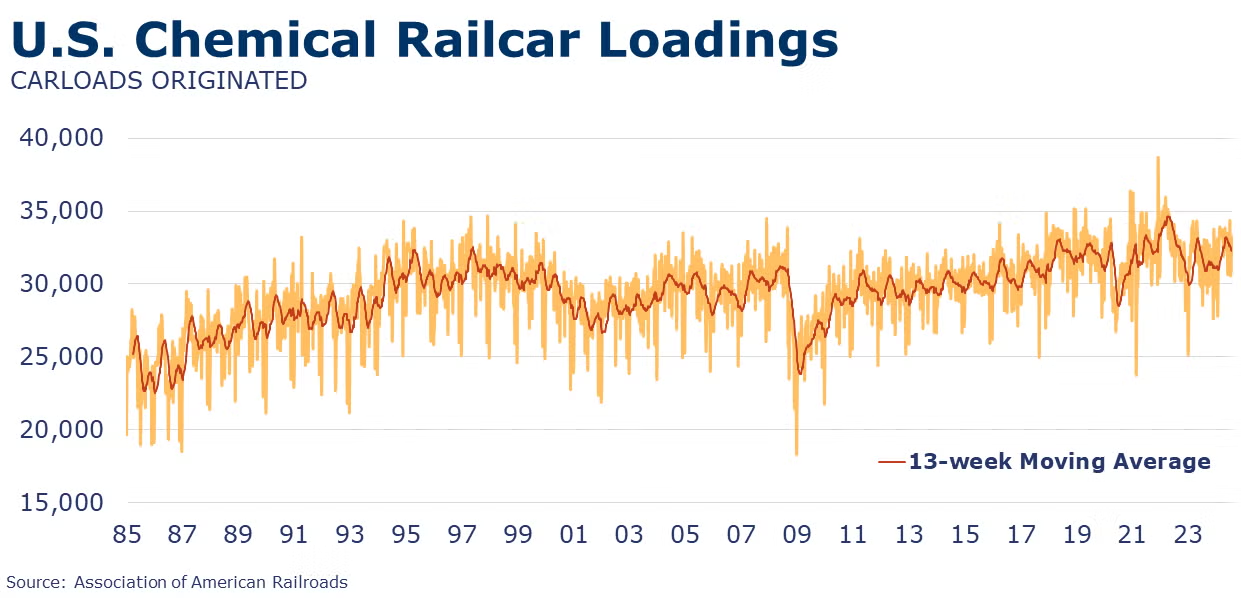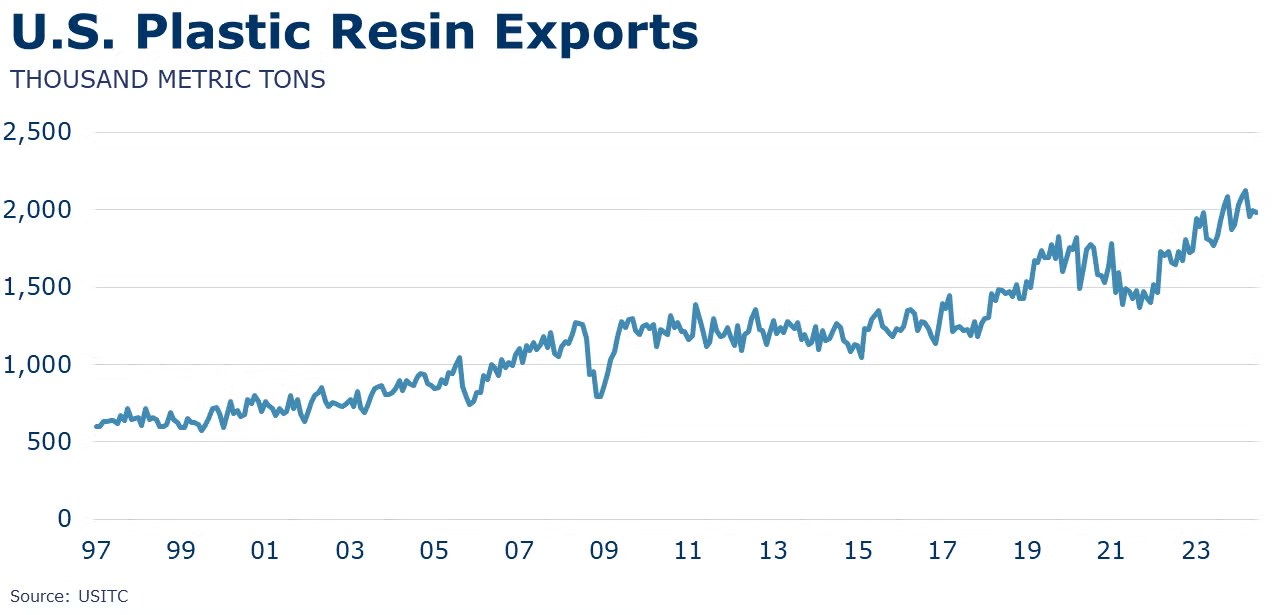Running tab of macro indicators: 13 out of 20

The number of new jobless claims fell by 17,000 to 233,000 during the week ending August 3. Continuing claims increased by 6,000 to 1.875 million, and the insured unemployment rate for the week ending July 27 was unchanged at 1.2%.
The U.S. trade deficit in goods and services narrowed by 2.5% to $73.1 billion in June as exports rose 1.5% and imports rose 0.6%. Goods exports rose over June driven by civilian aircraft, fuel oil, natural gas, and other petroleum products. Goods imports rose, driven largely by pharmaceuticals. Imports of semiconductors, telecoms equipment and electrical apparatus products also rose over June. Imports of industrial supplies and materials were down reflecting declines in crude oil, nuclear fuel materials, and iron and steel mill products.

The ISM Services PMI® rose 2.6 points to 51.4% in July. Over the 50-mark, the reading for July indicates expansion in economic activity in the US services sector over the month. It was the 47th time in 50 months that services grew. Business activity was up, new orders were up, employment rose, and supplier deliveries were faster.
Wholesale inventories rose slightly over June while sales declined, pushing the inventories-to-sales ratio up. Inventories rose by 0.2% over June and were up 0.1% Y/Y. The largest inventories gains occurred in petroleum, machinery, and automotive. Sales declined 0.6% in June but were up 2.4% Y/Y. The overall decline was driven by lower sales in petroleum. The inventories-to-sales ratio nudged up from 1.35 to 1.37 in June, lower than last year’s 1.40.


Oil prices were lower than a week ago on concerns about the slowing U.S. economy and EIA’s announcement that US oil production hit a record high 13.4 M bpd last week. U.S. natural gas remained near the $2 mark, but European gas prices were higher following a Ukrainian incursion into Russia and the capture of a gas transit hub. The oil to gas competitiveness ratio moved down from 39.2 to 36.7 this week. Natural gas stocks moved up and the rig count for the week ending Aug 2 was nearly stable, moving down by 3 to 580.
Indicators for the business of chemistry suggest a yellow banner.

According to data released by the Association of American Railroads, chemical railcar loadings were up to 33,218 for the week ending August 3. Loadings were up 2.7% Y/Y (13-week MA), up (4.1%) YTD/YTD and have been on the rise for 9 of the last 13 weeks.

Sales of chemicals at the wholesale level fell 0.1% in June to $12.9 billion. Wholesale inventories were 0.2% higher during the month. As a result, the inventories-to-sales (I/S) ratio rose from 1.13 in May to 1.15 in June. This was still lower than the 1.23 I/S ratio in June 2023. Compared to a year ago, chemical wholesale inventories were down 7.6% Y/Y while sales were off 1.7% Y/Y.
U.S. chemical exports were down 2.2% in June reflecting declines in all categories except bulk petrochemicals and intermediates and other specialties. Chemical imports fell by 9.4% as imports declined in every category except consumer products. The U.S. chemicals trade surplus rose to $2.2 billion in June and is $12.7 billion YTD. Compared to the same month last year, exports were down 2.7% Y/Y and imports were up 4.0% Y/Y.
U.S. plastic resins exports were down 1.8% in June to a level up 7.7% Y/Y on a USD$ value basis. On a volume comparison, at 2.0 million metric tons exported in June, plastic resins exports were down 0.5% for the month and up 12.1% Y/Y.

Note On the Color Codes
Banner colors reflect an assessment of the current conditions in the overall economy and the business chemistry of chemistry. For the overall economy we keep a running tab of 20 indicators. The banner color for the macroeconomic section is determined as follows:
Green – 13 or more positives
Yellow – between 8 and 12 positives
Red – 7 or fewer positives
There are fewer indicators available for the chemical industry. Our assessment on banner color largely relies upon how chemical industry production has changed over the most recent three months.
For More Information
ACC members can access additional data, economic analyses, presentations, outlooks, and weekly economic updates through ACCexchange.
In addition to this weekly report, ACC offers numerous other economic data that cover worldwide production, trade, shipments, inventories, price indices, energy, employment, investment, R&D, EH&S, financial performance measures, macroeconomic data, plus much more. To order, visit http://store.americanchemistry.com/.
Every effort has been made in the preparation of this weekly report to provide the best available information and analysis. However, neither the American Chemistry Council, nor any of its employees, agents or other assigns makes any warranty, expressed or implied, or assumes any liability or responsibility for any use, or the results of such use, of any information or data disclosed in this material.
Contact us at ACC_EconomicsDepartment@americanchemistry.com.

